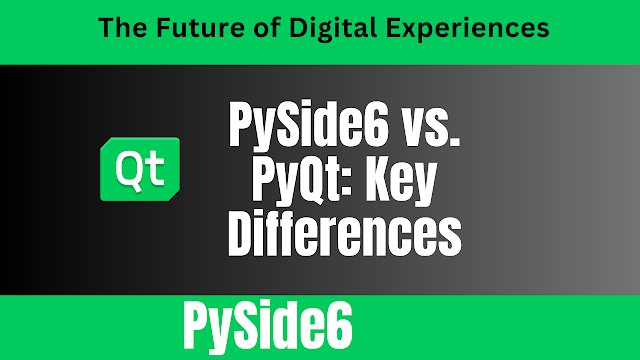PySide6 vs. PyQt: Key Differences
When it comes to creating Python applications with Qt-based graphical user interfaces (GUIs), developers have two popular options: PySide6 and PyQt. Both libraries provide Python bindings for the Qt framework, allowing you to harness the power of Qt's GUI capabilities while using Python as the programming language. However, there are some key differences between the two that may influence your choice:
1. Licensing and Commercial Use:
- PySide6: PySide6 is released under the LGPL (GNU Lesser General Public License) and is open-source. This license permits free usage in both open-source and commercial projects without requiring you to open-source your own code.
- PyQt: PyQt comes in two editions: GPL and commercial. The GPL edition can be used for free in open-source projects, but if you intend to use PyQt in a closed-source commercial application, you must purchase a commercial license.
2. Maintainers:
- PySide6: PySide6 is officially developed and maintained by The Qt Company, the same organization that develops the Qt framework. It has strong ties to the Qt ecosystem and typically follows Qt's release schedule closely.
- PyQt: PyQt is developed by Riverbank Computing and is maintained independently of the Qt framework. While it's well-maintained and offers excellent documentation, it may not always align precisely with the latest Qt releases.
3. Qt Designer Integration:
- PySide6: PySide6 integrates seamlessly with Qt Designer, allowing you to design GUIs visually and then load them into your Python application.
- PyQt: PyQt also offers integration with Qt Designer, providing similar visual design capabilities.
4. Documentation and Community:
- PySide6: PySide6 has official documentation and is backed by the Qt community. It benefits from a substantial user base and community support.
- PyQt: PyQt also has comprehensive documentation and an active user community. However, the community may be smaller compared to PySide6 due to its commercial licensing.
5. API Differences:
- Both libraries provide Pythonic APIs for working with Qt, but there are subtle differences in method names and class structures. Transitioning between the two may require some adaptation.
6. Development Philosophy:
- PySide6: PySide6 aims to align closely with the development philosophy and direction of the Qt framework. This means it may offer more seamless integration with new Qt features as they are introduced.
- PyQt: PyQt often implements features from both PyQt4 and PyQt5, which may not always align with the latest developments in Qt.
7. Version Compatibility:
- PySide6: As of the last knowledge update (September 2021), PySide6 was compatible with Qt 6, the latest major version of the Qt framework. It strives to stay up-to-date with the latest Qt releases.
- PyQt: PyQt is available for both Qt 5 and Qt 6. It can be an attractive option if you need to maintain compatibility with older Qt versions.
Tags
PySide6

